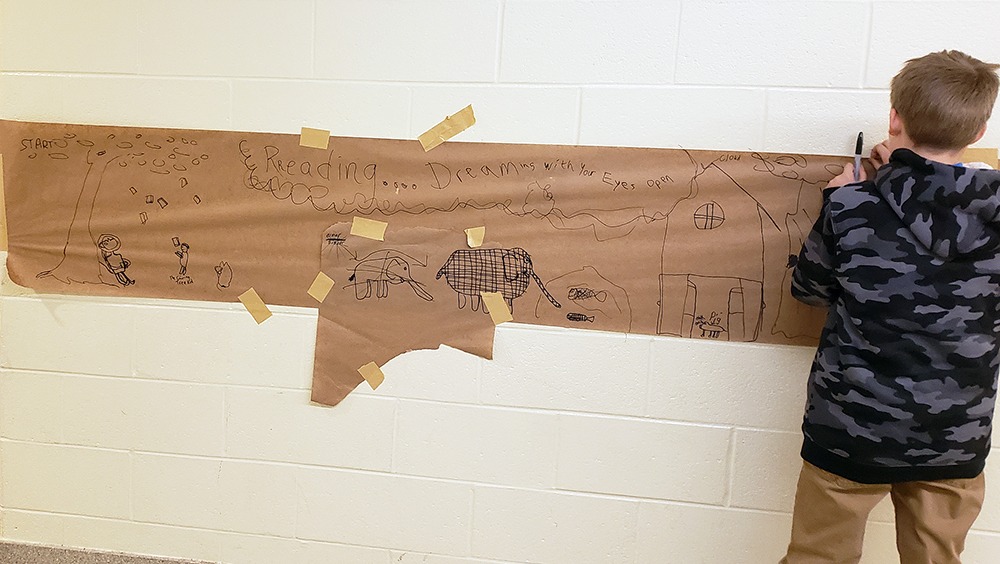Estimated reading time: 0 minutes
Table of contents
Sketching is a fundamental skill for any mural artist. It serves as the foundation upon which a mural is built. Mural sketching techniques allow artists to visualize their ideas. Artists can experiment with compositions. It helps them communicate their vision to clients and collaborators. In this comprehensive guide, we will explore mural sketching techniques in detail. We will examine the role of digital tools for sketching and also look into the benefits of on-site sketching. Finally we will also discuss the importance of collaborative sketching and how it can enhance the mural design process.
The Power of Sketching in Mural Design
Sketching is a powerful tool that allows mural artists to:
- Visualize Ideas: Quickly explore different concepts and compositions.
- Decide and visualize: evaluate proportions and sizing
- Experiment with Styles: Try out various styles and techniques.
- Communicate with Clients: Effectively convey ideas and gain feedback.
- Document the Creative Process: Track progress and revisit past work as part of learning mural sketching techniques.
Digital Tools for Mural Sketching
Digital tools have revolutionized the way mural artists approach sketching. Software like Adobe Photoshop, Procreate, and Sketchbook Pro offer a wide range of features for creating detailed and realistic sketches. These tools allow artists to experiment with different colors, textures, and compositions. They can easily make changes and corrections to improve their mural sketching techniques.
On-Site Sketching: Capturing the Essence of a Location
On-site sketching is a valuable technique for capturing the unique atmosphere and character of a location. By sketching directly on-site, artists can watch the light, shadows, and details that will inform their mural design.
- Observation and Analysis: On-site sketching allows artists to study the architecture. They also watch the surrounding environment and the people who inhabit the space to refine mural sketching techniques.
- Quick Studies: Quick sketches can capture fleeting moments. These include the play of light and shadow or the movement of people.
- Reference Material: On-site sketches can serve as valuable reference material for the final mural design.
Collaborative Sketching: A Team Effort
Collaborative sketching involves working with clients, community members, and other artists to develop a shared vision for a mural project. By sketching together, participants can generate new ideas, explore different perspectives, and build consensus. Both collaborative sketching and individual sketching are important mural sketching techniques.
- Client Engagement: Collaborative sketching allows clients to actively join in the design process. Clients can offer input on the direction of the project.
- Community Involvement: Artists can involve the community in the sketching process. By doing so, they create murals that show the values and aspirations of the local people.
- Teamwork and Collaboration: Collaborative sketching fosters teamwork and builds strong relationships among the artists involved in the project.
A Collaborative Approach at Snyder-Girotti Elementary School
At Dubus Studio, we believe that art is a collaborative process. We collaborate with communities, schools, and organizations. Our aim is to create murals that show the unique identity and values of a particular place.
For example, we recently worked with gifted students at Snyder-Girotti Elementary School. They helped to create a mural inspired by seven children books. Each grade level selected a book. Parents and teachers provided guidance and support. The students actively participated in the sketching and design process. They were later involved in the painting process. This collaborative approach resulted in a vibrant and meaningful mural that captured the imagination of the entire school community.
Conclusion
Mastering mural sketching techniques is a crucial skill for any mural artist to be successful. By embracing both traditional and digital techniques, artists can create compelling and impactful murals that resonate with their audience. Whether you’re sketching on-site or in the studio, remember to experiment, practice, and have fun.
Related Links
Looking to Bring the Magic of Storytelling to Your Own Space?
- Turn your vision into reality!
- Let’s discuss how a collaborative mural project can inspire your community.
- Discover the benefits of a mural creation and contact me today for a free consultation!


